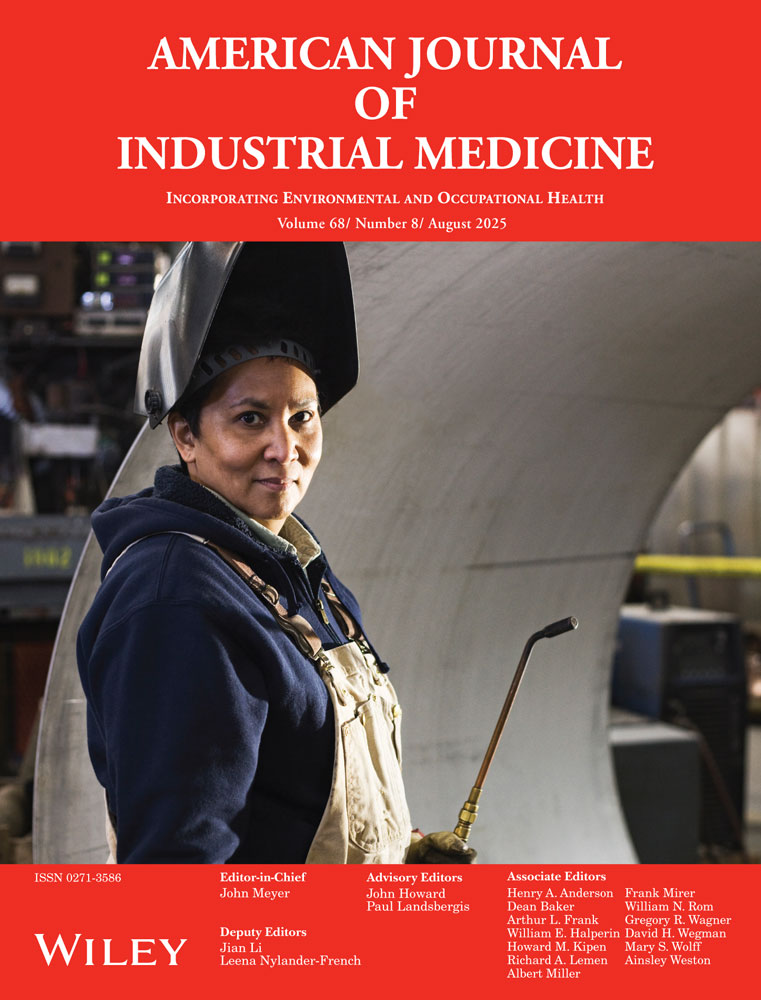Serum type III procollagen peptide: Indicator for pulmonary fibrosis: II. Application in 80 asbestos insulation workers
Abstract
An assay for type III procollagen peptide (P-III-P) was applied to serum from 80 asbestos insulation workers in order to evaluate its relationship with pulmonary and pleural fibrosis. The serum peptide levels of 16 control workers were 7.8 ± 2.0 ng/ml (mean ± SD). An association between the serum values of P-III-P and the profusion of small irregular opacities on chest X-rays was noted. The levels in the group with moderate interstitial pulmonary fibrosis [profusion category 2 (2/1, 2/2, and 2/3)] and with marked interstitial pulmonary fibrosis [profusion category 3(3/3)] were 9.9 ± 2.3 ng/ml (n = 5) and thus tended to be higher than those of 16 control workers (p<0.1). On the other hand, there was not correlation between serum peptide levels and pleural lesions nor between the former and duration of asbestos exposure. From the results of the investigation [part I of which is reported elsewhere (Okazaki et al, 1986)] this assay may be useful for detecting individuals with a more marked tendency for progression of interstitial pulmonary fibrosis due to asbestos exposure in insulation work.




